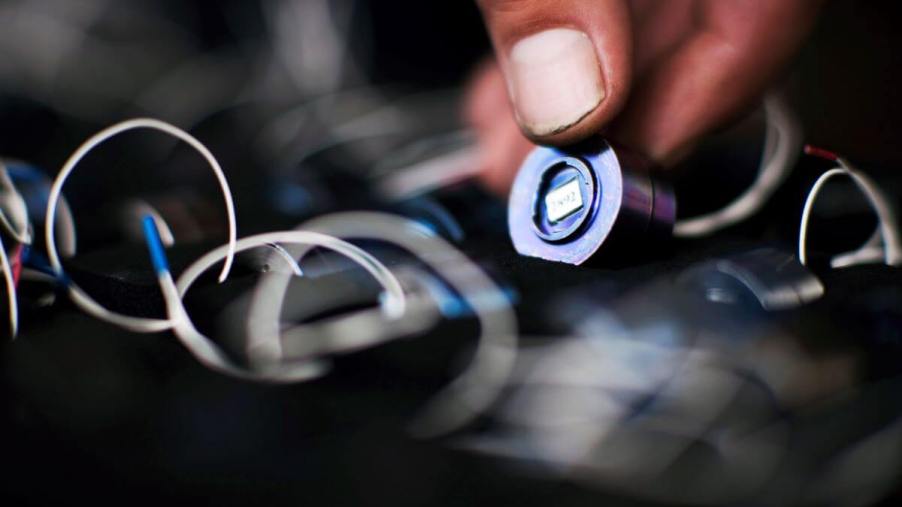
How Many Sensors Does a Modern Car Have?
Automotive engineers employ computers to control nearly every aspect of your vehicle’s operation. An array of sensors relay information, ranging from car-safety alerts to vehicle health and maintenance needs to the car’s computer. The computer uses that information to adjust the car’s operation or warn the driver of the issue. So, how many sensors can you expect a modern car to have under its shell and inside its cabin, and what are they all used for?
How many sensors do modern cars have?
While you won’t know all the roughly 100 potential car sensors, you’re likely already familiar with some from everyday driving. Whenever you turn your car key on but before starting it, you’ll see several warning lights on the dash illuminate. Depending on your model, you’ll see icons or gauges for coolant level, coolant temperature, tire pressure, oil pressure, and seat belt use, to name a few. All of those indicators use a sensor to monitor each system.
How do car sensors work?
The following list will briefly describe some standard sensors and their functions.
ABS sensors
Vehicle Freak says ABS sensors work with a separate ABS computer to monitor each wheel’s speed. If a wheel stops rotating and loses traction during braking, the ABS, or anti-lock braking system, reduces braking pressure on that wheel to restore traction.
Airbag sensors
RX Mechanic says airbag sensors employ an accelerometer that detects the sudden decrease in speed resulting from a frontal collision. This rapid deceleration triggers the airbag sensor and deploys the vehicle’s airbags in a fraction of a second.
Camshaft/crankshaft position sensors
Synchronous camshaft(s) and crankshaft rotation are critical to peak engine performance and efficiency. Position sensors relay the rotation speed and position of each component to the engine’s electronic control module (ECM) to monitor.
Car parking sensors
Car parking sensors use electromagnetic energy or ultrasound pulses to detect nearby obstacles in your path. The pulse return intensity, monitored by the control system, increases as the car approaches the barrier.
Flow sensors
Sentronics developed an in-vehicle fuel flow sensor capable of lab-based bench accuracy to measure real-world fuel consumption. While these hi-tech sensors have yet to find their way onto production vehicles, the increasing need for more accurate fuel economy data makes their adoption seem likely.
Knock sensors
Knock sensors attached to the engine block turn an engine’s knocking sounds into electrical pulses. The engine’s computer receives these electrical signals and either alerts the driver through the check engine light or adjusts the engine timing to eliminate detonation knock.
Mass air flow sensors
Another type of flow sensor, the mass air flow (MAF) sensor, lets the computer know how much air is coming into the intake manifold. The computer uses this information when calculating the required fuel/air mixture it delivers to the engine.
NOx sensors
Auto Chimps says diesel engine vehicles use the NOx sensor to monitor the level of nitrogen oxide in their exhaust emissions. If the NOx levels fall outside the desired range, the ECU (electronic control unit) adjusts the fuel/air mixture to bring it back in line.
Oxygen sensors
Oxygen or O2 sensors measure the amount of oxygen in the exhaust emissions. The vehicle’s computer uses this information to monitor the vehicle’s fuel-burning efficiency.
Rain sensors
Vehicles with automated windshield wipers employ rain sensors to inform the system when it’s raining and, therefore, when to activate.
Throttle sensors
Utmel says that the throttle sensor relays information such as the speed and amount of the throttle opening changes to the computer. This information allows engine load calculations, ignition timing adjustment, exhaust gas recirculation control, and idle speed control, enabling your car to respond when you speed up or slow down.
Torque sensors
Torque sensors measure the rotational force supplied by your car’s engine.
Vehicle speed sensors
El-Pro-Cus says a vehicle speed sensor is part of the ABS with additional responsibility to transmit vehicle speed data to control transmission shifting points.
Voltage sensors
Among other duties, voltage sensors monitor the health of the vehicle’s 12-volt charging and electrical system.
Water in the fuel sensors
More common on diesel engine vehicles but also present on some gasoline engines, the water in fuel or WiF sensor functions as its name implies. A WiF sensor, located on the fuel filter housing, monitors the fuel system and alerts the operator when it detects water in the fuel.
Are those all the sensors present on today’s cars?
The short answer is no, not by a long shot. We’ve only covered 15 common though still somewhat obscure automotive sensors. Aside from the most common sensors you likely already know, many more are in today’s cars. Please leave us a note below identifying your favorite or the most surprising sensor you’ve encountered.




